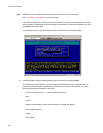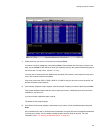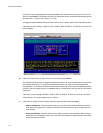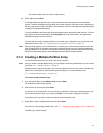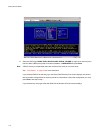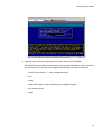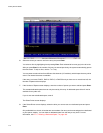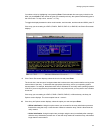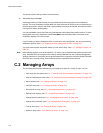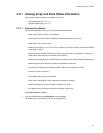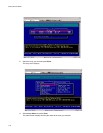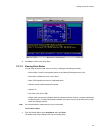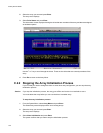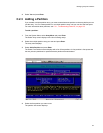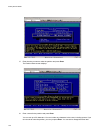Galaxy 65 User Guide
116
The system confirms that you want to create the array.
11
Select
Yes
and press
Enter
.
A message notifies you that the array is being created and shows the progress of the initialization
process. The array initialization process takes from several minutes to more than an hour depending on
the array type (volume, RAID 0, and RAID 1 are the fastest), array size, drive speed, and other processes
running on the Galaxy 65 Subsystem.
You can press Esc to return to the Disk Array Administrator menus and perform other functions. To check
the progress of the array initialization, select Array Menu from the System Menu. The status of the
initialization displays in the list of arrays.
If you find that you need to change the disks or some other array configuration, you can stop the array
initialization process. See C.2.2, ”Stopping the Array Initialization Process”, on page 120.
You must create at least one partition before you can use the array. See C.2.3, ”Adding a Partition”, on
page 121.
Note Most operating systems, such as Windows NT 4.0, require you to restart the host system to see the new
array. Windows 2000 can recognize new LUNs by selecting Refresh from the Computer Management
Window. NetWare v3.12 and later can recognize new devices by typing the command SCAN FOR NEW
DEVICES at the console prompt. Other operating systems might have similar features.
C.2 Managing Arrays
The Disk Array Administrator software lets you manage your arrays in a variety of ways. You can:
• View array and drive status (see C.2.1, ”Viewing Array and Drive Status Information”, on page 117)
• Stop the initialization process (see C.2.2, ”Stopping the Array Initialization Process”, on page 120)
• Add a partition (see C.2.3, ”Adding a Partition”, on page 121)
• Verify an array (see C.2.4, ”Verifying an Array”, on page 123)
• Reconstruct an array (see C.2.5, ”Reconstructing an Array”, on page 126)
• Expand array capacity (see C.3.3, ”Expanding a Partition”, on page 139)
• Change the array name (see C.2.7, ”Changing an Array Name”, on page 129)
• Change array ownership (see C.2.8, ”Changing Array Ownership”, on page 130)
• Trust an array (see C.2.9, ”Trusting an Array”, on page 130)
• Delete an array (see C.2.10, ”Deleting an Array”, on page 131)



